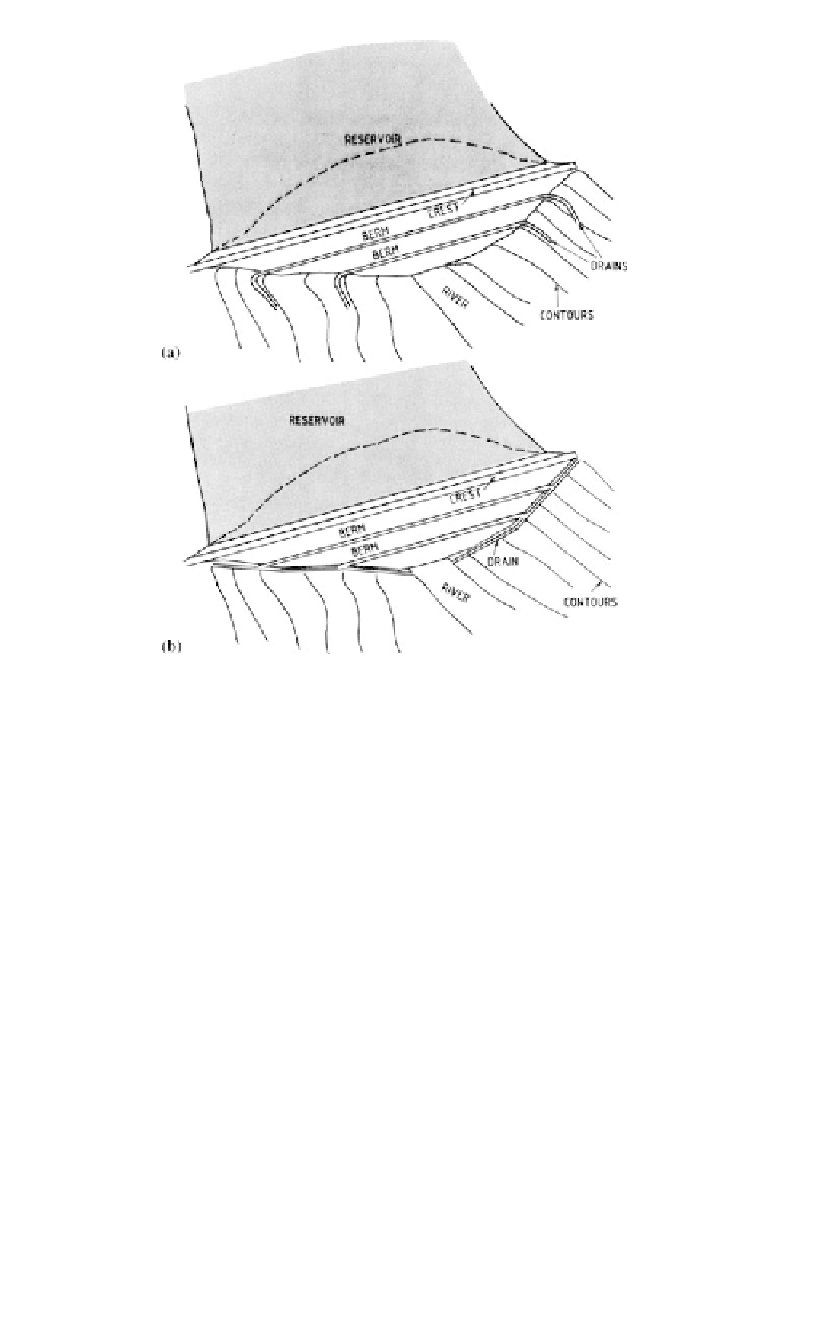Environmental Engineering Reference
In-Depth Information
Figure 13.7.
Berms and drainage for the downstream slope of earthfill dams where grassing is used to
control erosion.
This is necessary to prevent blockage of the outlet to the drain by soil eroded off the
embankment.
When first constructed, drains will often block with eroded soil before the grass is well
established and must be inspected and cleaned out regularly. Even when grass is estab-
lished inspection and maintenance of drains are necessary to ensure they continue to func-
tion properly.
13.2.2.2
Grass and rockfill cover
The type of grass to be used is dependent on local conditions, particularly the climate and
soil, and advice should be sought from local authorities such as the Soil Conservation
Service. It is common procedure to provide a layer of topsoil and then to seed the slope
using a bitumen hydromulch which provides initial protection against erosion before the
grass establishes. Low native bushes also have been successfully used. It must be expected
that the grass will need to be watered, at least until it is well established and that reseed-
ing and repairs will be necessary. Grass cover locally reinforced with a patented erosion-
resistant mat would be helpful at the dam/abutment intersection where run-off can
concentrate.
Where there is an ample supply of rockfill and/or climatic conditions preclude the use
of grass, dumped quarry run rockfill, placed directly on to the earthfill is usually a satis-
factory way of controlling erosion on the downstream slope. USBR (1977) indicate that
0.3 m of rockfill usually is adequate although 0.6 m is usually easier to place.

